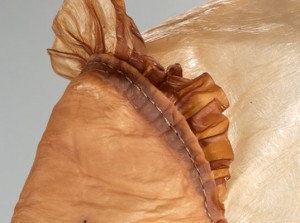H/t to Rebecca Bollwitt’s Miss604.com’s January 26, 2022 posting about a puzzle being used to help raise funds for the Raincoast Conservation Foundation. ($20 from each puzzle sold will be donated to the foundation.)

I am fascinated by the orca-shaped pieces. Here’s more about the puzzle from the January 26, 2022 Miss604 posting (Note: A link has been removed),
The Rise puzzle is unique in its design, even for the innovative Puzzle Lab. It features 206 identical orca-shaped pieces in an Escher-style tessellation pattern. The technology in Puzzle Lab draws from cofounder Andrew Robev’s knowledge of parametric, computational, and generative design, involving writing custom computer algorithms to generate highly complex geometry and digital fabrication (using robotic tools such as a laser cutter, 3D printer, or CNC router).
…
The January 26, 2022 Miss604 posting features an image of the whole puzzle along with a succinct description of the project and the people behind it.
Puzzle Lab?
According to Puzzle Lab’s About Us page, they make puzzles you can feel good about,
Puzzle Lab was founded by Tinka Robev and Andrew Azzopardi, who met studying architecture at the University of Waterloo in 2012.
The couple moved to Victoria, BC in 2014 where they started Studio Robazzo, a multidisciplinary design & branding agency.
During the coronavirus pandemic, they came up with the idea to launch a puzzle company to encourage more people to get off their devices and into the real world. Sharon Parker joined them and Puzzle Lab was born in the fall of 2020.
Since its founding, Puzzle Lab has been dedicated to fabricating heirloom-quality puzzles as well as providing a platform for talented Canadian artists.
…
a next-level puzzling experience
Our heirloom-quality wood puzzles merge technology, art, and nature.
We start by curating stunning graphics and local art. Next, the wacky puzzle pieces are created in our digital laboratory with custom computer algorithms. Then, they’re laser cut at our studio in the heart of Victoria, BC.
Each puzzle design has a unique cut pattern, so you won’t find the same piece twice!
You won’t find the same shape twice? it seems an exception has been made for Rise.
Artwork
The company solicits artwork for its puzzles (from the Artist Submission page),
Winter 2021-2022
Please fill out the form below to submit your artwork, and/or share this page with artists in your community to help us spread the word!This is a paid opportunity: all selected artists receive ongoing royalties on the puzzles sold using their licensed artwork(s).
…
The Rise artwork is by Art by Di,
Beauty of nature is the key inspiration behind Di’s contemporary west coast acrylic paintings. With a focus on light, color and movement Di seeks to reduce the endless detail of life into simple form and palette, allowing viewers’ imaginations to fill in details of time and place. …
…
… The artist lives and works on Bowen Island, Canada.
Filling in the last pieces
You can find more of Puzzle Lab’s work on their Instagram account. Should you be interested in purchasing a Rise wood jigsaw puzzle,
Strength. Resilience. Recovery. ‘Rise’ is a celebration of life – a celebration of Howe Sound. It is a celebration of cleaner air, cleaner water, cleaner land. Lose yourself in this enchanting west coast scene as you take on a uniquely challenging wood jigsaw puzzle composed of just over 200 identical orca-shaped pieces seamlessly tiled in an Escher-style tessellation pattern.
This exciting Puzzle with a Purpose supports the wildlife conservation efforts of the Raincoast Conservation Foundation.
It is $100.
Again, the organization receiving the $20 donation from the purchase price is the Raincoast Conservation Foundation.
